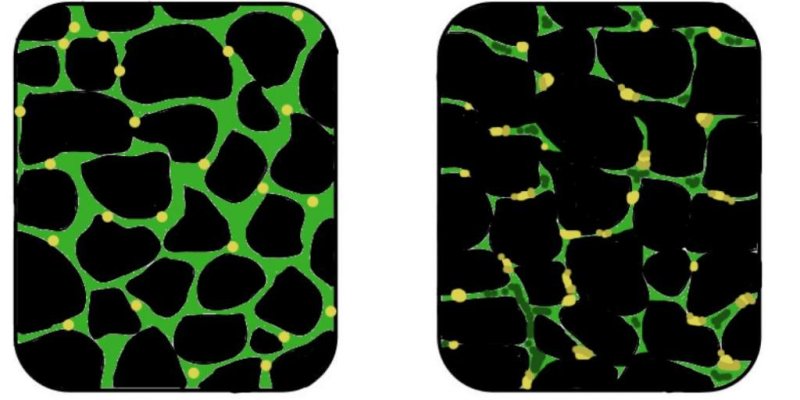In muscular dystrophy's affected muscle, on the right, the tissue has become disorganized and the concentration of dystrophin, in green, which is important to properly functioning muscles, is greatly reduced compared to normal muscle, on the left. Photo by Cbenner12/
Wikimedia Commons
July 5 (UPI) -- Refined cells from a type of benign tumor regenerated skeletal muscle stem cells in mice with muscular dystrophy, according to a new study.
University of Minnesota Medical School researchers sought to find the source of cells to rebuild muscles. They found that teratomas -- benign tumors that produce many types of cells, including hair follicles, muscle, and glands -- could get the job done.
The findings were published Thursday in the journal Cell Stem Cell.
Muscular dystrophy is a genetic disorder in which muscle tissue wastes away and loses function.
"The goal of this research was to seek in unexplored places a source of cells that, when transplanted, would rebuild skeletal muscle and demonstrate significant improvements in muscle strength and resilience," lead author Dr. Michael Kyba, a professor in the Minnesota School of Medical School's Department of Pediatrics, said in a press release.
For the study, researchers refined and sorted cells from animal teratomas, injected a small number of teratoma-derived cells into a diseased muscle. They found the 40,000 teratoma-derived cells regenerated 80 percent of this muscle versus the 5 percent to 10 percent regeneration that is now possible.
Additionally, the new cells developed muscle with muscle stem cells, and showed significant improvement over controlling muscle, including force and contraction.
The researchers noted that although cells can be regenerated, they need to ensure the therapy is safe for humans. At this point, they said they see no adverse events.
"The fact that teratomas harbor cells of such greater potency than those that spontaneously differentiate when we culture them in a dish is remarkable," Sunny Chan, an assistant professor in the Minnesota Medical School's Department of Pediatrics, said. "Indeed, beauty can be found in the most unexpected of places."















